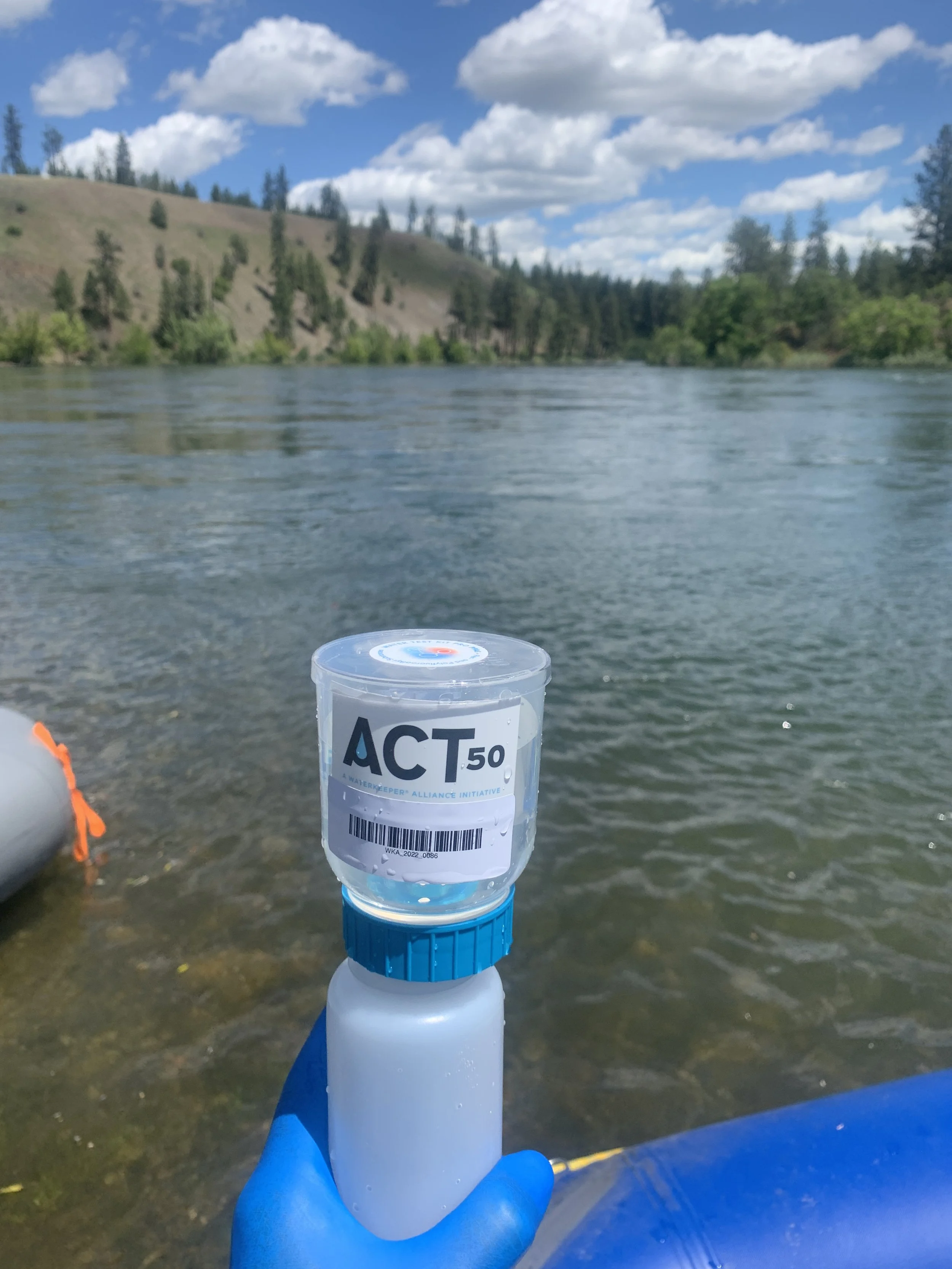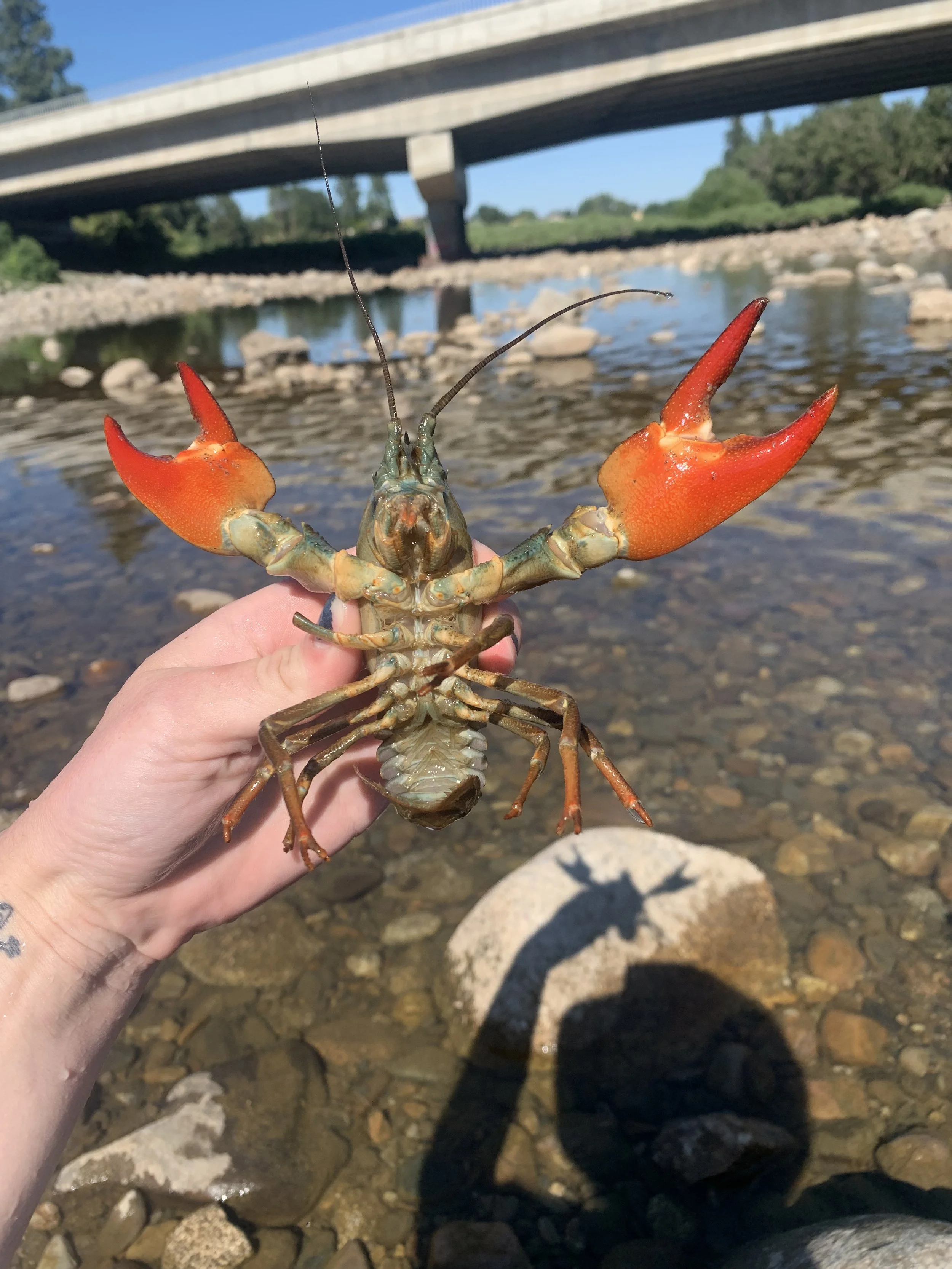The EPA recently promulgated a strong and protective Water Quality Standard (WQS) for toxic PCB pollution.
A Water Quality Standard is a standard by which we measure whether water is legally polluted or not. In Washington the has been a long-running battle over the WQS for toxic chemicals called PCBs.
Get involved and learn more about protecting the Spokane River!
Thanks to the help of local community scientists, we've taken the next step towards proving that Hangman Creek pollutes the Spokane River with sediment. We are ecstatic to announce that we've completed a major milestone in our "Community Science Sediment Study".
First-of-its kind study by Waterkeeper Alliance found 83% of the waters tested across the country were contaminated by dangerous PFAS chemicals. The Spokane River was also found to have PFAS pollution below Spokane’s Wastewater discharge plant
The latest progress report of restoration and pollution remediation work in the Hangman Creek watershed is hot of the presses. It highlights continued progress towards a healthy watershed and clean water. Much of the work in this report was performed due to an innovative lawsuit brought against the EPA by the Spokane Riverkeeper.
The Spokane Riverkeeper has partnered with the University of Idaho Water Resources Research Institute to collect crayfish in the Spokane River to be tested for mercury levels. Mercury is pervasive in our environment and the Spokane River, along with other pollutants such as PCBs. This summer of 2022 was the second year of this study; these data will be contributed to studies throughout the Columbia Basin and used to assess crayfish and river health. Previous results show low levels of mercury in our local crayfish, although less is known about heavy metal and other toxics.
In May of this year, we helped pass a landmark Spokane Ordinance (C36209) that aims to address declining river flows by stopping the overconsumption of aquifer water. Spokane can keep more water in our River in the low-flow seasons and be much smarter by reducing the aquifer water it uses in outdoor irrigation and keeping that water in the Spokane River. The Ordinance was visionary n that it listens to River flows and determines when we need to begin reducing our aquifer footprint and address the peak demand in our city which is primarily outdoor irrigation.
Hey neighbor. I'm talking to you! Don't get me wrong, I love my neighbors and appreciate the immediate community we share together. But there are few things in life that irk me. And one of those things is wasting water. As Spokane County (including Kootenai, Bonner and Stevens Counties) continue to grow, so does the demand for cold, clean water. Not just for human consumption and irrigation but also for our native redband trout and future salmon. Water is essential to survival. Without water, we're done and dusted. We will NOT survive.
This summer, we here at the Spokane Riverkeeper have undertaken a “River Journey”. Simple enough in name, it offers endless implications for the meaning and relevance to us as people, as advocates, as a community, and as an organization. The Journey is a descent down the Spokane River and it has been designed to communicate several things to folks who watch the River and care deeply about its future.
On Monday night, May 23rd, the City Council of Spokane passed a landmark ordinance - C36209 - that codified a water conservation and drought response plan for the City of Spokane. The ordinance was vetoed by Mayor Woodward and the veto was overridden by the Spokane City Council on June 6th of 2022. Spokane is entering a new era with regards to valuing our municipal water as potential river flows. We are now understanding that over-consumption has profoundly negative and lasting impacts on the Spokane River during critical low-flow periods of the long hot summers of Eastern Washington and drought years.
One does not have to decide between conservation and development…what ever happened to the middle??
Read our Fall 2021 newsletter. Full of great info.
During the summer of 2021, community scientists from the Spokane area joined scientists from the University of Idaho and the Spokane Riverkeeper to capture and analyze crayfish from the Spokane River and Hangman Creek for mercury content. We found that crayfish from the Spokane River have very low mercury content, below the recommended threshold for consumption. Hangman Creek crayfish had slightly higher mercury content and are also safe to eat.
It is all about coming Home. This year, as your Spokane Riverkeeper, I will be continuing to discuss the importance of clean, cold water and the maintenance of river flows through the lens of chinook salmon recovery. We will continue the conversation with you all - our supporters - as well as ongoing internal discussions with those working hard directly on salmon recovery. The intersection of River protection and salmon recovery cannot be overstated. Not that long ago, salmon were a pillar of your River, the communities who lived with them, and the Rivers that depended on their bodies for sustenance. Upon their return home, they will again support the future of our Rivers and our communities.
It is becoming clear that with climate change, over-consumption and pressure from groundwater pumping, that water shortages during the summer are a profound new threat to the health of the Spokane River. Clean water becomes more vulnerable every day and our river is at risk.
2021 was a record year for our river cleanup program. We had more people, more cleanups and more litter collected than ever before! Thank you to all who helped this year, especially Northwest Renewables and the Spokane River Forum. Read the stat’s here.
The Spokane Riverkeeper partnered with Spokane Falls Trout Unlimited and local community scientists for a fourth year, to measure the effect of Hangman Creek’s annual sediment plume on water clarity (turbidity) in the Spokane River. During the winter and spring of 2021 27 community scientists performed 121 sampling events, collecting 411 water samples from the Spokane River and Hangman Creek. These samples were analyzed for turbidity and compared against state standards.
Results show nine turbidity violations over the course of the study in the Spokane River due to Hangman Creek. These results suggest that turbid water, even in a low flow year, is impacting the Spokane River to a degree that fish habitat and other values are degraded.
This report summarizes how a warming planet is affecting our river, its tributaries, and ecosystems. We discuss the policies intended to maintain healthy river temperatures, how these policies should be implemented, and how our community can make changes to benefit the river that contributes so much to our watershed.
This blog examines what the rights are nature are, how they are different from current legislation, and where they are being used around the world.























